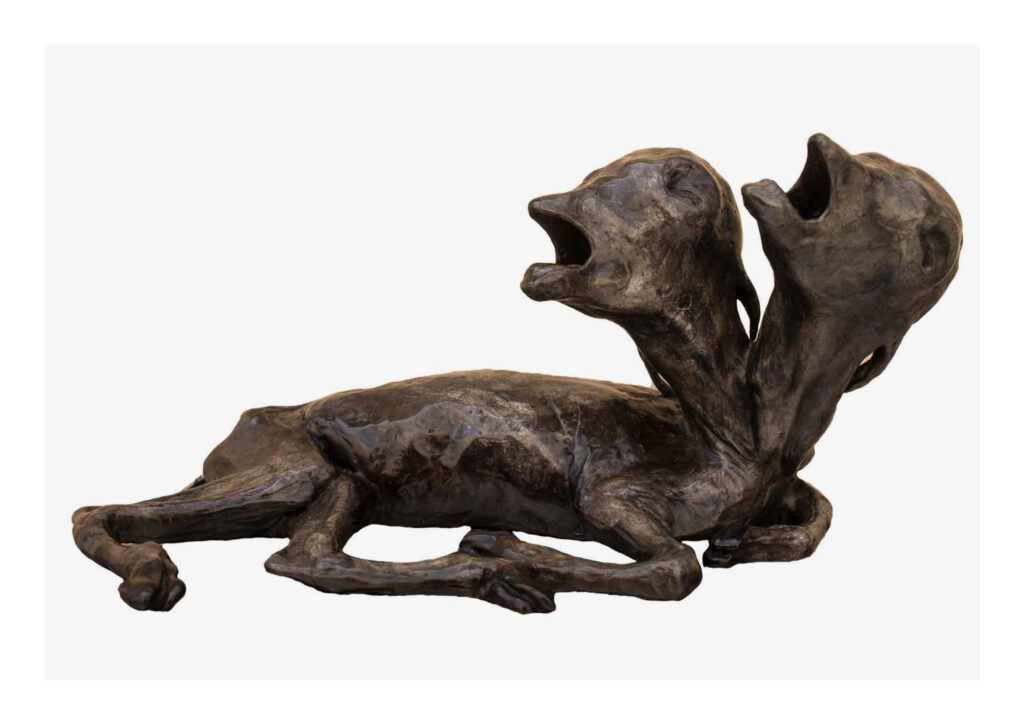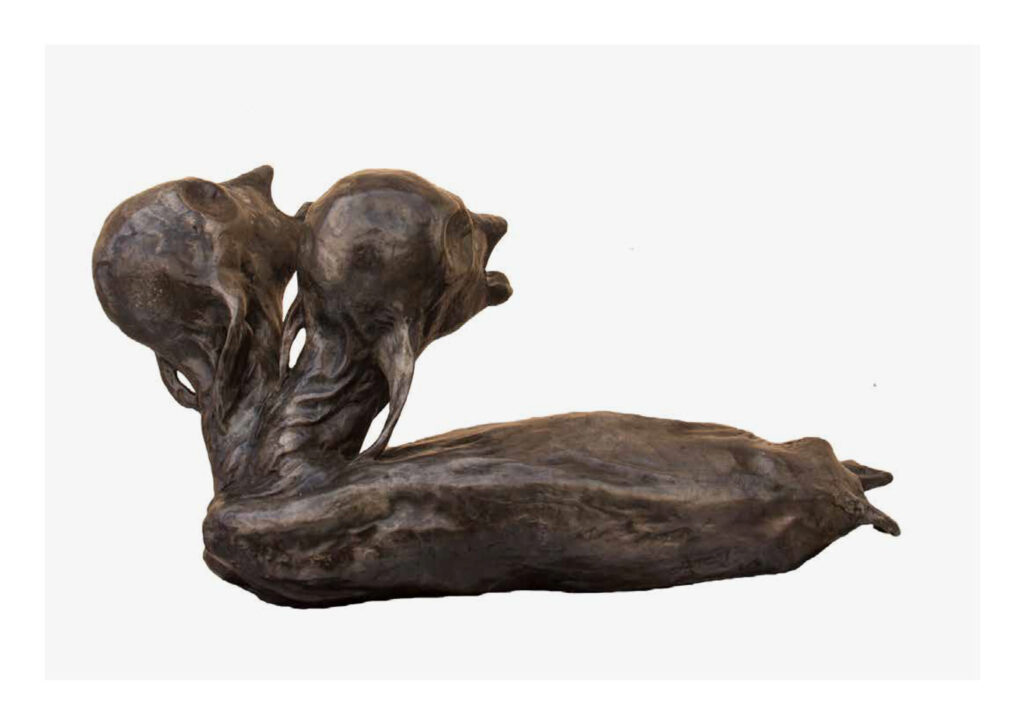Listen to Curatorial Text • Read Curatorial Text
Music: 24 Preludes for Violoncello and Piano “no. 12 “



A deeply personal reflection, Auerbach bronze sculpture ‘Vowed for Life’ intertwines the seemingly disparate themes of DNA mutation and marriage. This intricate fusion forms a complex metaphor, unifying two profound connections that shape identity and destiny: the chosen bond of matrimony, symbolizing love and commitment and the melding of two in one, and the unchosen, tragic bond with radiation, symbolizing cellular mutation and genetic alterations.
Born in a region marked by the Kyshtym disaster, a radioactive accident which occurred on the 29th of September 1957 at Mayak, in the closed city of Chelyabinsk-40, Auerbach connection to radiation’s effects informs her work. This personal history lends gravity to a striking juxtaposition, reflecting how these bonds, though different in nature, hold powerful sway over life.
The sculpture’s mutated, two-headed form uniquely symbolizes these dualities. Its twisted, embracing figures, almost dancing in their eternal connection, are elegant and alarming. The chosen marital vow, a consensual union, is captured in two beings eternally united—a dance of love, harmony, and reflections. Yet within this exact form, the unchosen commitment to radiation’s insidious lifelong effects on the body and psyche is also represented—an involuntary marriage to radiation, a bond offering no choice and lasting a lifetime.
In ‘Vowed for Life,’ Auerbach has woven two themes that resonate with the contradictions and complexities inherent in human bonds and commitments. Her sculpture asks us to look and compels us to confront the unseen bonds that can elevate and ensnare. It is a work that transcends context, reaching the essence of what it means to be bound by choice or fate.